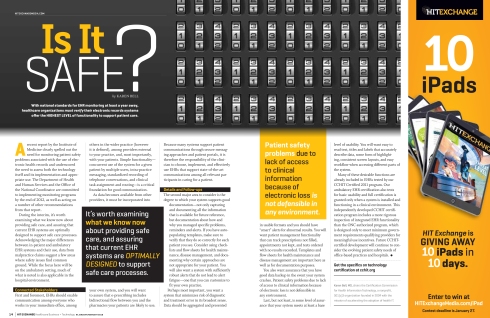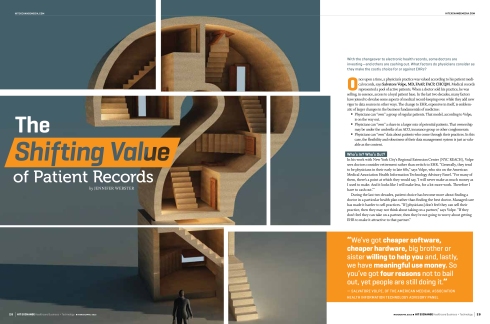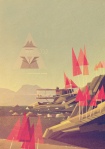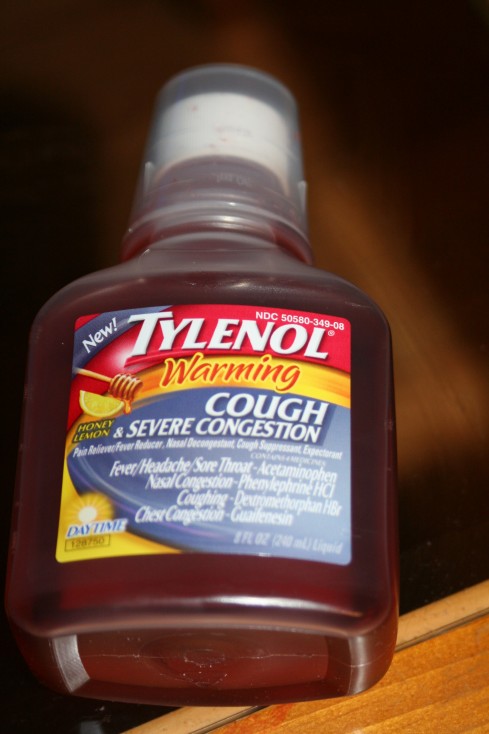Last semester I was asked to write a manifesto. It was possibly my most difficult project to date, but also my most enlightening. By examining deeply and honestly the way I felt about my field, my work and myself, I discovered that I contradict myself over and over, and have trouble speaking in absolutes. I’m generally this way with my philosophy, though. I think the best outlook is a flexible one. That being said, it’s a difficult sensibility to bring into a manifesto. This was a challenge. I decided to play up my contradictions, and write the manifesto with a sense of flexibility and relativity. I am proud of what I came up with, and stand behind it.
Manifesto for the Young Designer in the Real World
Take yourself seriously
Don’t sell yourself short because no one knows or cares who you are. Being a famous designer is like being a famous dentist. No one outside of your field cares. Fame is fleeting anyway, and should never be your goal. If you gain recognition, it will be because you’re talented, work hard, and are a pleasant human being, not because you strived for fame.
Don’t take yourself so seriously
Not every piece of work you create has to be some great commentary on the human condition or ask the viewer to question his reality. Some things are just pretty, and that’s okay. You’re a creative person, and you like seeing pretty things. This doesn’t mean you’re shallow or incapable of deep contemplation about the world around you, it just means you’re human.
Create what makes you happy, not just what’s work
Not all of your work needs to go into your portfolio. Create something small every day that means nothing. Sometimes you will find greatness buried in your scribbles and doodles. Do silly, funny, or just plain awesome projects that bring a smile to your face, and make you remember why you got into this in the first place. Working yourself to death is a great way to lose your passion, and your soul.
Create what’s work, not just what makes you happy
You are trying to make a living out of this, so do work that brings in money, and is portfolio- worthy. It is nice to think that as often as possible, we should do work that accomplishes a goal of social good. However, the world is full of rent checks and electric bills. Occasionally you will find yourself needing to do commercial work to survive. Do not let this make you feel like a sell-out, it is simply the way of the world. Be sure the work you do is never in promotion of harm, and you can always be proud of yourself and your work.
Don’t work for free
Charge for your work. It’s a little scary to ask for money the first few times, but remember: this is your job. If you treat yourself like you don’t deserve the money, no one’s going to give it to you. When you’re young, people think they can take advantage of you, promising that you will get noticed through the work you do for them for free. These “exposure” jobs are crap. No one will ever care who made the logo for their crappy band or small business or whatever. They are taking advantage of you, and you’re better than that.
Work for free
The only jobs worth doing for free are for charity or other non-profit orginazations. They need good design, and you need karma. Just as people donate money, so you can donate your skills and talents in promotion of good. Plus, these pieces make great portfolio/ resume work.
The world is harsh
You will need a thick skin to live here. People will hate both you and your work. Don’t spend too much time thinking about it, you may start to believe them. People will try to scam you out of money. Get everything in writing. Find a professional designer or better yet a lawyer you trust and work out a basic contract. Have everyone you do work for sign it. Hope you rarely have to resort to threatening breach of contract.
The world is beautiful
Life requires a certain amount of cynicism to survive. Do not let yourself become jaded. The world is harsh, but it is also beautiful. Never lose your sense of wonder, for there are still things to discover and explore. Enjoy what you do, and never forget that there are good people in the world, and sometimes they make mistakes. So will you. Be forgiving.
You need people
Nobody can sustain their passion without a community surrounding them, Get involved with the design community, and at the same time make sure you do not wrap yourself in a bubble; make meaningful connections with those outside your field as well. Inspiration can be found everywhere, and you will always learn something new. Allow yourself an active social life. Your work is not the definition of you, but merely an aspect. Having a rich, full life outside of design will aid you in not only in the work you make, but in your own sanity. Do not try to live despite your work; let your life inspire you to work.
You need yourself
You are your most important commodity. Set a daily deadline for yourself. If something doesn’t get done by the end of the day, don’t touch it until tomorrow. Force yourself to find balance. Eat vegetables, drink water, and get plenty of sleep. Stop wearing your 3 hours of sleep as a badge of honor. It doesn’t mean you work hard, it means you don’t know how to manage your time well. Take care of yourself.
Tags: advice, design, graphic design, manifesto, philosophy, young, young designer






























































